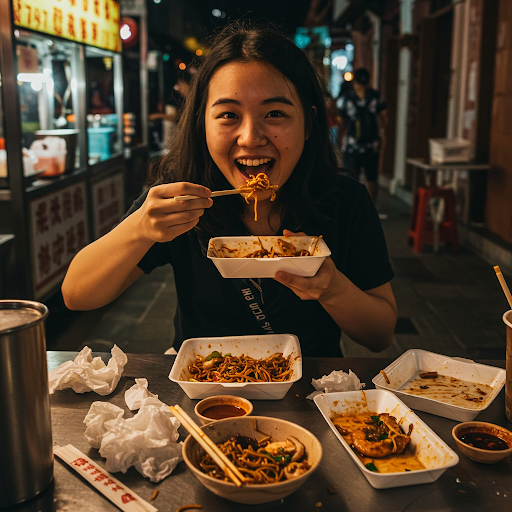Chinatown across the world holds a special place in the heart of food lovers. Bustling with energy, color, and rich aromas, these neighborhoods showcase a vibrant street food culture deeply rooted in tradition. But behind the enticing dishes and lively hawker stalls lies a lesser-known, yet equally important practice — the consumption and management of leftovers.
The Essence of Hawker Culture
Hawker centers, especially in areas like Singapore, Kuala Lumpur, and various Chinatowns globally, are synonymous with affordable, delicious food made with heart. Small vendors or “hawkers” specialize in one or two dishes perfected over decades. Due to the unpredictable nature of foot traffic, it’s inevitable that some food remains at the end of the day. Instead of letting this food go to waste, many hawkers have developed creative, responsible ways to handle leftovers — a practice tied closely to their cultural and historical values.
Traditional Wisdom: Waste Not, Want Not
In Chinese culture, food is sacred. The saying “every grain of rice represents a drop of sweat” emphasizes the hard work involved in producing food. Historically, families and street vendors alike learned to maximize every bit of their ingredients, ensuring nothing was discarded needlessly.
Chinatown hawkers follow this principle diligently. Rather than disposing of excess food, they incorporate it into new dishes, offer it at discounted prices at the end of the day, or donate it to those in need. This traditional mindset supports a zero-waste approach long before “sustainability” became a global trend.
Creative Uses of Leftovers
Hawkers have mastered the art of creatively transforming leftovers. For instance:
-
Reinvented Dishes: Unsold roasted meats might be shredded and added to fried rice or noodles the next day. Excess vegetables often find their way into stir-fries or soups.
-
Special Late-Night Deals: Many stalls offer “closing time specials” where leftover items are bundled into discounted meals, reducing waste and feeding more customers affordably.
-
Soup Bases and Broths: Leftover bones and trimmings become rich, flavorful broths that form the foundation for noodle soups or congee, ensuring no part of the ingredient is wasted.
These practices not only minimize waste but also add depth and richness to the dishes, making them even more beloved by locals and tourists alike.
Sustainability Beyond the Plate
The sustainable handling of leftovers in Chinatown hawker centers extends beyond food. Many vendors use eco-friendly packaging, repurpose cooking oil, and rely on energy-efficient methods passed down through generations. Their frugality and environmental mindfulness are reflections of a broader lifestyle that values conservation and resourcefulness.
In a world increasingly threatened by climate change and food scarcity, Chinatown hawkers demonstrate how age-old traditions can offer solutions to modern problems.
Community Connection Through Food Sharing
Leftover consumption also strengthens the community spirit. In many Chinatowns, it’s common for hawkers to donate unsold food to charitable organizations, temples, or directly to people experiencing homelessness. Some stalls even partner with community fridges or food-sharing initiatives where anyone can take surplus food free of charge.
This spirit of generosity preserves dignity, fosters a sense of togetherness, and ensures that the hard work of producing food benefits as many people as possible.
Adapting Tradition in the Modern World
Despite their rich traditions, Chinatown hawkers are not immune to the pressures of modernization. Health regulations, rising costs, and shifting customer expectations have made it more challenging to manage leftovers as freely as before. Nevertheless, many hawkers are adapting by:
-
Planning More Precisely: Better forecasting of daily demand helps minimize overproduction.
-
Smaller Batches: Preparing food in smaller, more frequent batches allows for fresher offerings and less leftover stock.
-
Food Apps and Online Sales: Some hawkers use apps that offer “surprise bags” of unsold food at reduced prices, combining technology with tradition to combat waste.
These adaptations ensure that the spirit of sustainability remains alive while meeting modern standards of food safety and hygiene.
Cultural Significance and Global Lessons
The Chinatown hawker leftover tradition offers important lessons for the global food industry. While many modern societies grapple with food wastage, Chinatown’s hawker centers show that sustainable practices can be naturally woven into daily business operations without sacrificing quality or profitability.
Challenges and the Way Forward
Maintaining the tradition of leftover consumption is not without challenges. Increasing health regulations often restrict how leftovers can be reused or redistributed. Additionally, younger generations may not always value traditional methods, favoring more commercialized food operations.
To preserve this beautiful tradition, it’s crucial to:
-
Educate and Celebrate: Sharing the history and significance of these practices with younger generations can instill pride and encourage continuity.
-
Support Policy Changes: Advocating for smart, flexible regulations that allow safe food redistribution can help hawkers continue their sustainable practices legally and safely.
-
Consumer Awareness: Customers can support hawkers by being open to buying end-of-day specials and understanding the importance of minimizing food waste.
Conclusion
The consumption of leftovers in Chinatown hawker culture is far more than a survival tactic; it is a beautiful culinary tradition rooted in respect, creativity, and community spirit. It demonstrates that sustainability doesn’t require grand gestures — small, thoughtful actions practiced daily by countless humble vendors can collectively make a profound impact.

